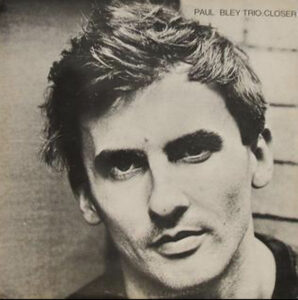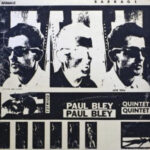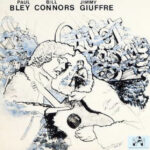Paul Bley
Paul Bley was a central figure in the emergence of “New Music” in the 1960s, 70s and beyond. It is hard to think of an important development that Bley was not a part of.
Paul Bley was born in Montreal, Canada. In the ‘50s he played piano with Charlie Parker, Lester Young, Ben Webster and Jackie McLean. Later he played with other mainstream artists like Coleman Hawkins, Sonny Rollins and Jimmy Giuffre. His first album as leader featured Charles Mingus on bass and Art Blakey on drums.

An Ear for New Talent
There seems to have been a mutual affinity between Paul Bley and nearly all the emerging talent of the day. Bley was playing piano for Ornette Coleman just months after Coleman’s first album in 1958.
More often than not, Bley played in a trio setting. I have compiled a partial list of some of the drummers and bass players he worked with in the 60’s and early 70’s. In most cases these players were at or near the beginning of their careers. The lists show the artist, the year Bley recorded with them and the performers they would later be associated with.
Drummers: Billy Higggins – 1958, Ornette Coleman.
Rashied Ali – 1963, John Coltrane.
Sonny Murray – 1964, Cecil Taylor, Albert Ayler.
Milford Graves – 1964, Albert Ayler, Lou Reed.
Paul Motian – 1964, Bill Evans, Keith Jarrett.
Barry Altschul- 1965, Chick Corea, Anthony Braxton.
Han Bennink – 1971, European New Music.
Bass: Charlie Haden – 1958, Ornette Coleman.
Steve Swallow – 1962, Gary Burton.
Eddie Gomez – 1964, Bill Evans.
Kent Carter – 1965, Steve Lacy.
Gary Peacock – 1967, Albert Ayler, Keith Jarrett.
Dave Holland – 1972, Miles Davis, Anthony Braxton, Chick Corea.
Carla Bley and Annette Peacock
Paul Bley was also a champion of up-and-coming composers. Carla and Paul Bley meet in the early 50’s. Carla’s compositions would be a cornerstone of Paul’s repertoire well into the mid 70’s.
Carla Bley began performing and recording around 1968. Her first album was an Opera called “Escalator Over the Hill” (1971). She continues to create wonderful music to this day. Special mention should be made of her official website. She generously offers many of her compositions in PDF form for download (Link).
Annette Peacock is another composer/performer that Paul had a long alliance. They both were early adopters of the ARP and Moog Synthesizers. Peacock would later collaborate with diverse artists like Karlheinz Stockhausen, Brin Eno and Evan Parker.
Record Labels
Paul Bley was also quick to associate himself with new record labels. In 1964-65 he released two albums on the fledgling ESP-Disc label – “Barrage” and the essential “Closer”.

Bley was the third person to record for the now famous ECM Records (Mal Waldron was the first). His 1972 recording “Open to Love” is considered one of his best.

SteepleChase Records recorded Bley in the first full year of its existence. The album, from 1973, is a duo with the great Niels Henning Orsted Pedersen on bass.

In 1974 Paul started his own short lived label, Improvising Artists.

Jazz Composers Guild
In 1964 Paul and Carla Bley helped launch the “Jazz Composer Guild“. Other founding members included Bill Dixon, Archie Shepp, Sun Ra, Cecil Taylor and Roswell Rudd. It was meant to support and promote the music without middlemen.
It was the first of many self-help organizations by these dedicated artists: Muhal Richard Abrams’ “Association for the Advancement of Creative Musicians”; Oliver Lake’s “Black Artists Group”; Ornette Coleman’s “Artist House”; Sam Rivers “Studio Rivbea”.
Paul Bley’s work is a great entry point into the language of “Collective Forms”.
Examples: Batterie, And Now the Queen, Ida Lupino,
Back to Chapter 9 – Things We Like
